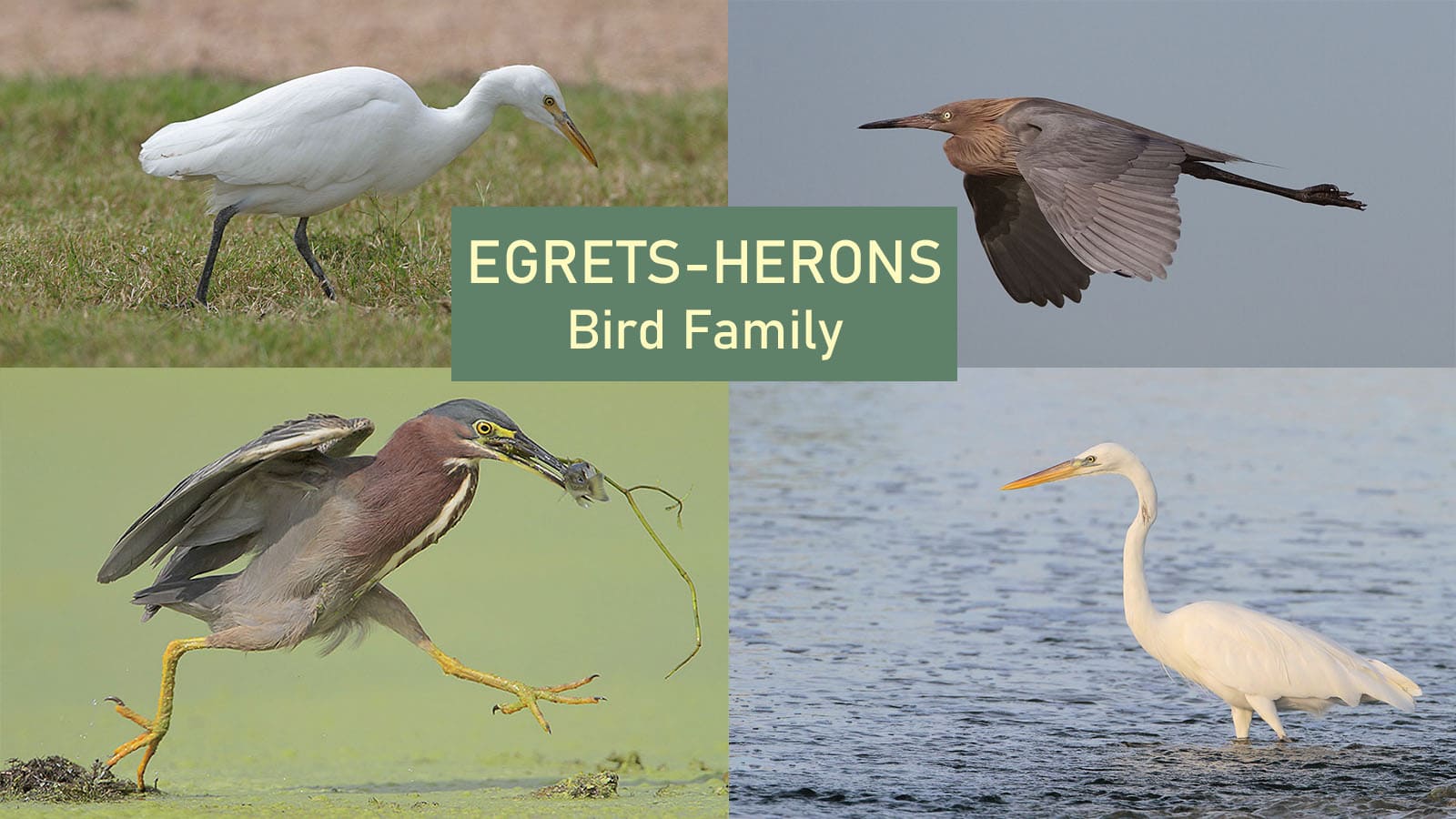Egrets, Herons and Similar Species
This group is made up of generally tall, thin-bodied, long-legged birds that are most often found near water.

Some have a limited range in the United States while others are widespread.
Things to know about this group:
1. The size, color and shape of the bill is often an important clue in identifying members of this group.
2. Adult and immature of most species are similar, but this is not always the case. For example, young Little Blue Herons are white, not blue.
3. The Cattle Egret is an exception to having a strong preference for water. It is often found in fields, and as it name suggest, often near cattle. Native to Africa, Cattle Egrets arrived in South America (no one knows how) in the mid-1900s and have gradually expanded their range northward.
Sandhill Cranes are also often seen in open fields.
4. There is no special distinction between the designation of “Heron” and “Egret.”
5. Very inexperienced birders sometimes believe the Roseate Spoonbill is a flamingo. Flamingos are very rare in the United States. Sightings outside of Florida are usually escaped birds (from a zoo or private collection).
6. Secretive birds
Least Bittern and American Bittern are secretive species most often observed in cattails or other thick vegetation.
7. Notable behaviors
– The Reddish Egret is know for its “drunken” behavior as it searches for prey.
– Egrets and Wood Storks will will use their wings to block the sun, making it easier to see prey.
– Many of the birds in this group will shake a foot in the water in an attempt to scare up prey.
– Green Herons are known for dropping pieces of bread or other food into the water to attract a fish.
8. Some fairly recent name changes of birds in this group include:
– Louisiana Heron to Tricolored Heron
– Little Green Heron to Green Heron
9. Egrets fly with their neck folded back in an “S” shape. Cranes fly with their neck stretched out.
10. Limpkins are more closely related to rails than egrets. They are included in this group because of their general body shape and preferred habitat. Their name comes from their unusual, limping walk.
